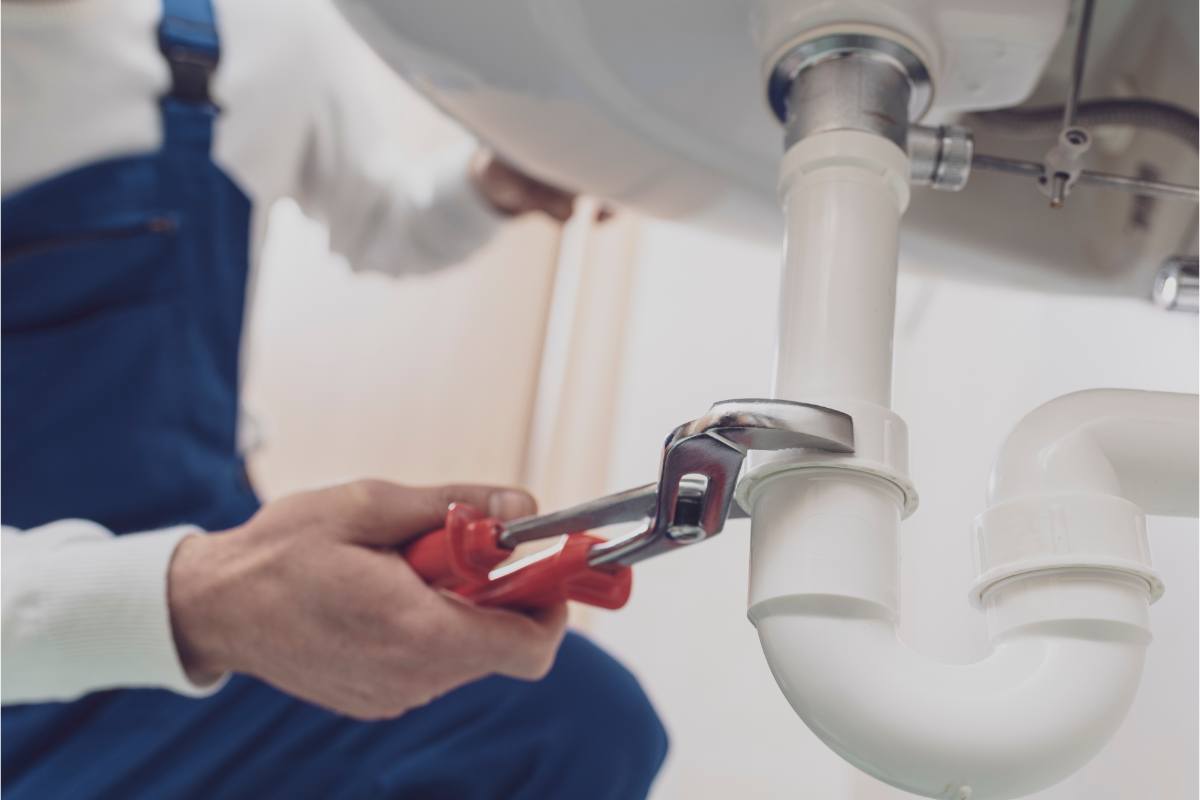Exploring the ABCs of Home Plumbing: A Beginner's Manual
Exploring the ABCs of Home Plumbing: A Beginner's Manual
Blog Article
What're your concepts on How Does the Plumbing Work in Your Home??

Plumbing is a necessary aspect of any type of home, in charge of supplying clean water for drinking, food preparation, and showering, as well as eliminating wastewater safely. Recognizing the fundamentals of home plumbing is essential for every homeowner to make certain correct upkeep, troubleshooting, and, if required, repair work. In this beginner's guide, we'll cover the fundamental ideas of home plumbing to help you end up being extra familiar with how it works.
Supply Of Water System
The water supply system brings tidy water into your home from a municipal water source or a personal well. It includes a primary water line that attaches to your home's plumbing system, typically located underground. A water meter gauges the quantity of water consumed, while a shut-off shutoff permits you to manage the flow of water right into your home.
Plumbing Fixtures
Plumbing components are gadgets that deliver water to different parts of your home and include sinks, taps, commodes, showers, bathtubs, and home appliances such as dishwashing machines and washing makers. Each fixture is attached to the water supply system via pipes and fittings and may have its shut-off valve for upkeep or emergencies.
Water Furnace
The water furnace is accountable for heating water for domestic use, consisting of bathing, cooking, and cleaning. Common kinds of hot water heater consist of tank-type hot water heater, tankless (on-demand) hot water heater, and heat pump water heaters. The water heater is attached to the water system and supplies warm water to plumbing fixtures as needed.
Water drainage System
The drain system gets rid of wastewater from your home and lugs it away to a sewage therapy center or septic tank. It consists of a network of pipes, installations, and components that carry wastewater from plumbing components to the primary sewage system line or septic system. Correct drainage is essential to prevent clogs, backups, and sewer leakages.
Ventilation System
The ventilation system aids maintain correct air pressure and stop sewer gases from entering your home. Air vent pipelines, additionally referred to as vent stacks, extend from plumbing fixtures to the roof covering, permitting sewer gases to leave safely outside. Ventilation pipes also permit air to get in the drainage system, assisting in smooth wastewater flow and protecting against suction or vacuum cleaner results.
Usual Plumbing Tools
Having the right devices available is important for carrying out standard plumbing repairs and upkeep tasks. Common plumbing tools include adjustable wrenches, pipe wrenches, pliers, pipeline cutters, hacksaws, plungers, augers (or drain snakes), and Teflon tape. Having these tools conveniently offered can aid you tackle minor plumbing concerns successfully.
Fundamental Plumbing Fixings
While some plumbing repair services might require expert support, lots of common concerns can be resolved with standard DIY techniques. Discovering how to repair a dripping faucet, unblock a drain, change a commode flapper, or fix a leaking showerhead can save you time and money on plumbing repair work.
Verdict
Understanding the basics of home plumbing is essential for each property owner to maintain a secure, useful, and effective plumbing system. By familiarizing yourself with the water supply system, plumbing components, water drainage system, ventilation system, common plumbing devices, and standard repair services, you can with confidence attend to minor plumbing problems and ensure your home's plumbing system operates smoothly.
Understanding Basics of Home Plumbing System: A Beginner's Guide
The Main Components of Your Home Plumbing System
The Water Supply System
This system is responsible for transporting fresh water into your home. It usually has a main water line that splits into two branches: one directed towards cold water services and the other connected to a water heater for hot water. The pressure is key here; it ensures water reaches all parts of your house.
The Drainage System
Once water has been used, it becomes wastewater that needs to be removed from your home. This is where the drainage system comes into play. It includes all the pipes that carry wastewater and sewage away from your house to sewage treatment facilities or septic tanks.
The Vent System
The vent system prevents sewer gases from entering your home and helps maintain the pressure balance that allows wastewater to flow out properly. These vents usually exit through the roof of your house.
Water Heating System
For those who enjoy hot showers or using hot water for cleaning, the water heater is a crucial part of the plumbing system. It can be a tankless system, which heats water on demand, or a traditional water tank model.
Common Plumbing Problems and Basic Troubleshooting
Plumbing systems, while designed to be durable, can face issues like clogged drains, leaky faucets, or low water pressure. Here are some basic troubleshooting tips:
Clogged Drains
Use a plunger or a plumber's snake to try and dislodge whatever is blocking the drain. Regular cleaning can prevent clogs.
Leaky Faucets
Often caused by worn-out washers or gaskets, these can usually be replaced by someone with basic DIY skills.
Low Water Pressure
This might be due to sediment build-up in your fixtures or a leak somewhere in your water line. Cleaning out aerators or seeking a professional to detect leaks might be necessary.
Preventive Maintenance Tips
Maintaining your plumbing system is key to avoiding emergencies. Regularly check for leaks, avoid disposing of grease down the sink, and have your system inspected by a professional plumber at least once a year.

I'm very involved in Plumbing Basics For Every Home: The HomeTriangle Guide and I hope you appreciated my blog post. Feel free to pause to promote this blog posting if you enjoyed reading it. Kudos for being here. Kindly check our blog back soon.
Information Report this page